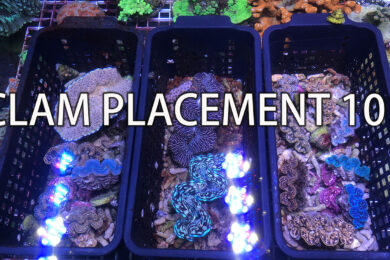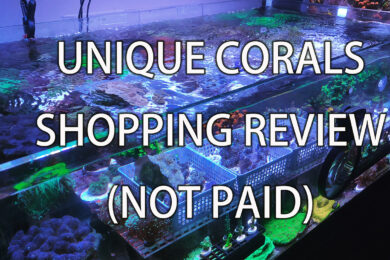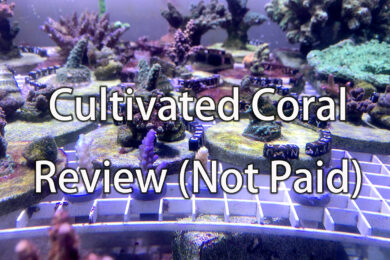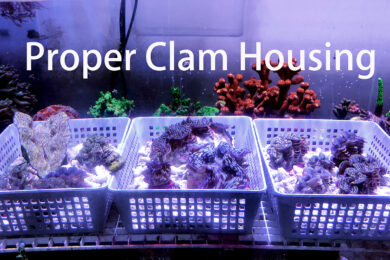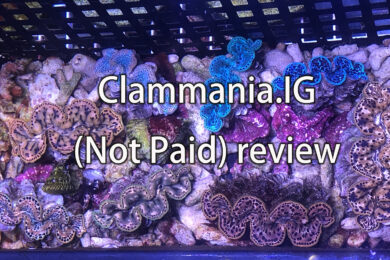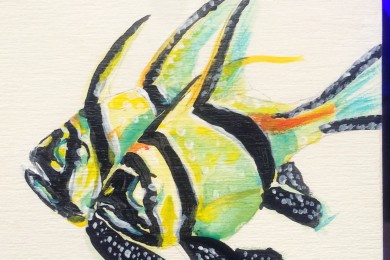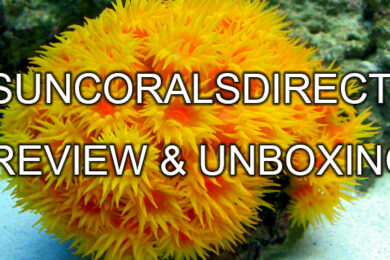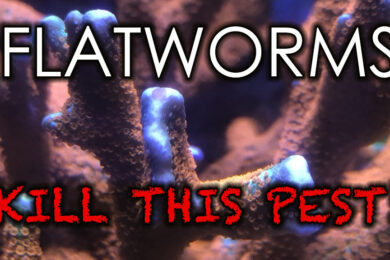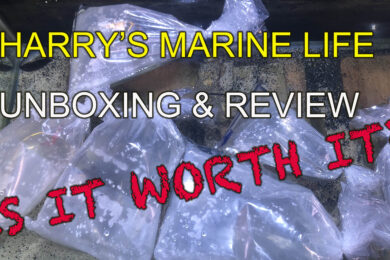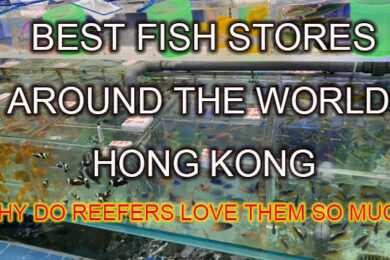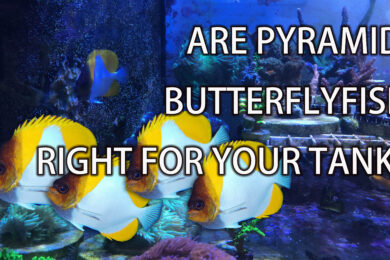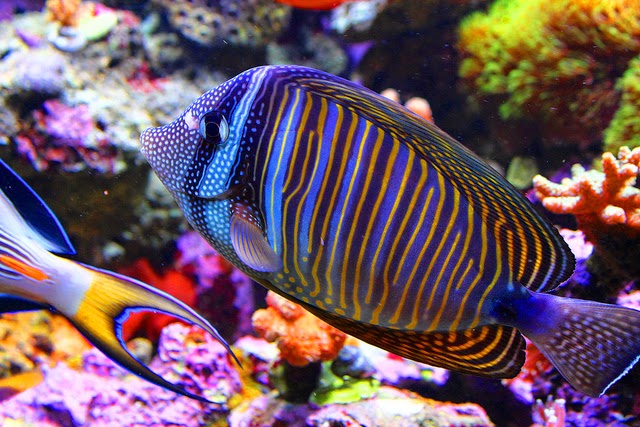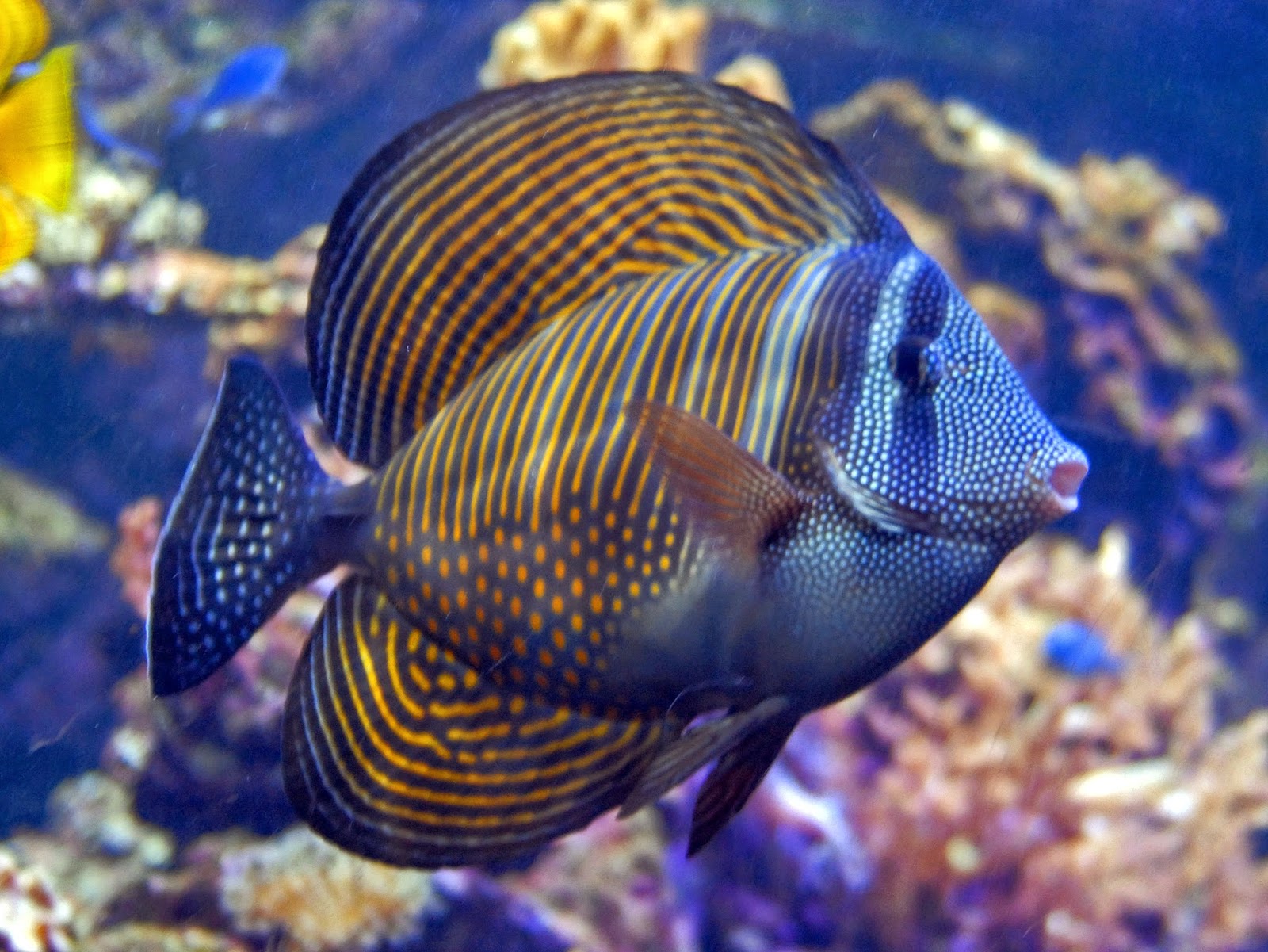Tangs, or surgeon fish, are among the most popular for community reef tanks. Not only most of them do not grow of an exceedingly large size, they are beautiful, mostly hardly, and also utilitarian since they are algae grazers in nature and does not harm invertebrates or corals.
If one asks for my opinion on the most beautiful tang in the world, there is no doubt my answer will be Desjardini Tang (Zebrasoma Desjardini), also known as the Redsea Sailfin tang.
They can sometimes be confused with their closely related cousin, the Sailfin Tang (Zebrasoma Veriferum). However, upon close examination, you can see they are distinctively different, especially as they age. Here are a couple links to general information and a sample photo for comparison:
Desjardini: http://www.liveaquaria.com/product
Sailfin: http://www.liveaquaria.com/product
Like all other tangs in the Zebrasoma family, this fish is very hardy, active, and display lots of personality. However, you should also follow the general rule for tangs- do not keep multiple of them unless they are introduced at the same time, and also that there is adequate room for multiple- which comes the catch for this fish- they get BIG.
Among the commonly available surgeon fish for sale in the North American aquaria, this fish definitely ranks among the top 5 in adult size (among the larger tangs in the trade: Vlamingi, Naso, Sohal, Clown, and Orange Shoulder Tangs) The Desjardini Tang can reach up to a foot and a half in length. And when this fish fully extends its dorsal and anal fins, it is the tallest Tang in the trade (see illustration below)
For the sake of its size, please do not consider housing this fish unless your tank is at least 120Gallon (with lighter bio load), and no smaller than 180 gallon if you plan a fish-packed tank.
Besides full-reef quality water parameters, you must also provide ample vegetable matter for this herbivore to dine on (warning, you might hear many reef hobbyists suggest clipping terrestrial vegetable such as lettuce for tangs to eat, this might actually harm them as land vegetables are far less nutritious in the amount of mineral and amino acid their marine counterparts contain).
Also you do not need to spend big money purchasing marine algae to clip on like this: http://www.drsfostersmith.com/product
Just visit a local Asian grocery store and puchase the Nori (seaweed) sheets used for sushi wraps. It’s the exact same stuff but 10 times cheeper.

